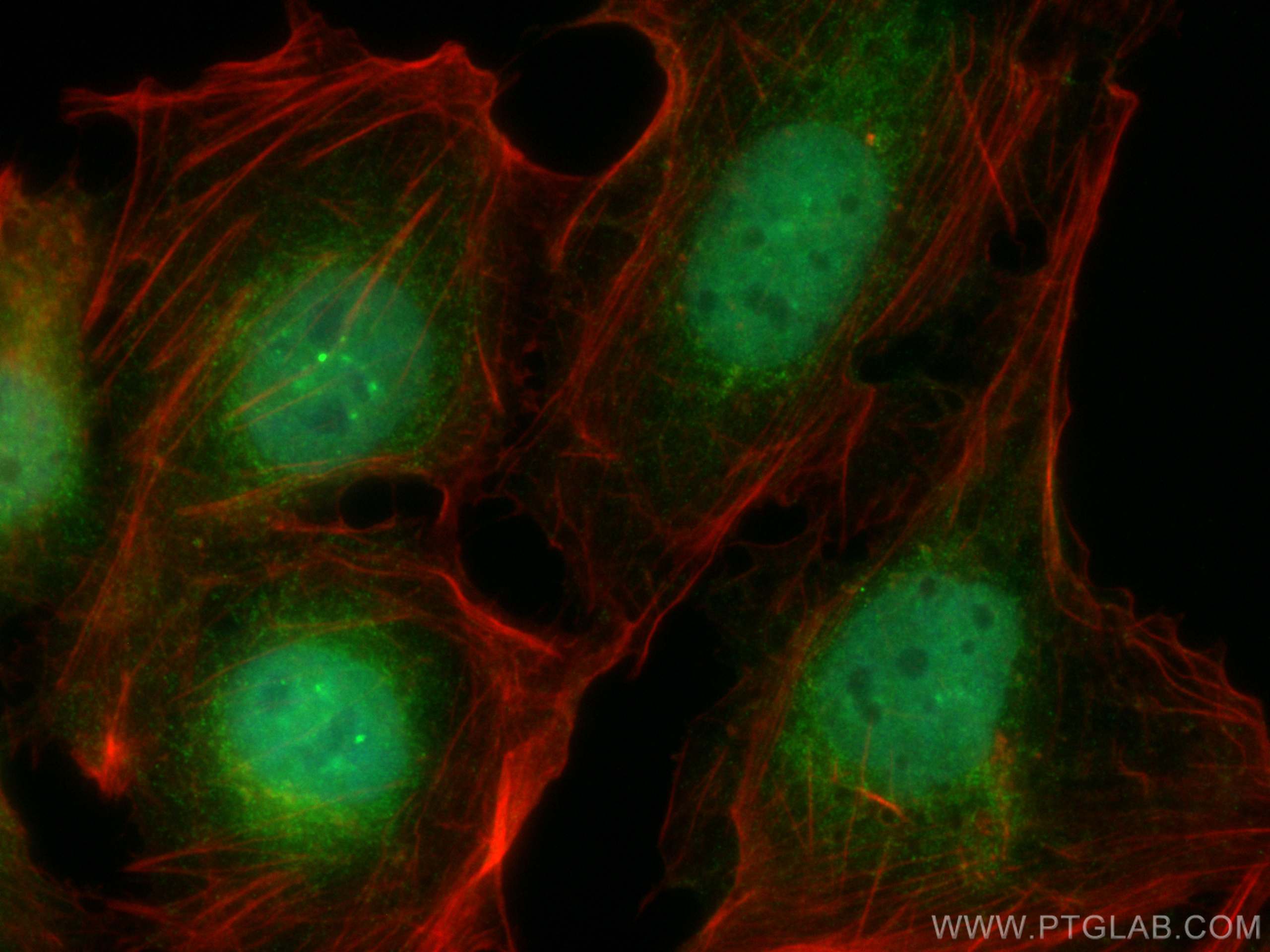Tested Applications
| Positive IF/ICC detected in | U2OS cells |
Recommended dilution
| Application | Dilution |
|---|---|
| Immunofluorescence (IF)/ICC | IF/ICC : 1:50-1:500 |
| It is recommended that this reagent should be titrated in each testing system to obtain optimal results. | |
| Sample-dependent, Check data in validation data gallery. | |
Product Information
CL488-68239 targets SNX15 in IF/ICC applications and shows reactivity with Human samples.
| Tested Reactivity | Human |
| Host / Isotype | Mouse / IgG2a |
| Class | Monoclonal |
| Type | Antibody |
| Immunogen | SNX15 fusion protein Ag8839 Predict reactive species |
| Full Name | sorting nexin 15 |
| Calculated Molecular Weight | 342 aa, 38 kDa |
| Observed Molecular Weight | 40-50 kDa |
| GenBank Accession Number | BC009897 |
| Gene Symbol | SNX15 |
| Gene ID (NCBI) | 29907 |
| RRID | AB_3084453 |
| Conjugate | CoraLite® Plus 488 Fluorescent Dye |
| Excitation/Emission Maxima Wavelengths | 493 nm / 522 nm |
| Form | Liquid |
| Purification Method | Protein A purification |
| UNIPROT ID | Q9NRS6 |
| Storage Buffer | PBS with 50% Glycerol, 0.05% Proclin300, 0.5% BSA, pH 7.3. |
| Storage Conditions | Store at -20°C. Avoid exposure to light. Stable for one year after shipment. Aliquoting is unnecessary for -20oC storage. |
Background Information
SNX15 belongs to the sorting nexin family and is involved in several stages of intracellular trafficking. Overexpression of SNX15 results in a decrease in the processing of insulin and hepatocyte growth factor receptors to their mature subunits (PMID: 11085978). SNX15 is widely expressed, with the highest expression in skeletal muscle, heart, brain, kidney, spleen, thymus, and small intestine.
Protocols
| Product Specific Protocols | |
|---|---|
| IF protocol for CL Plus 488 SNX15 antibody CL488-68239 | Download protocol |
| Standard Protocols | |
|---|---|
| Click here to view our Standard Protocols |



